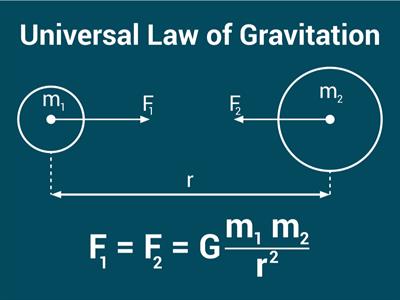
PUMPA - SMART LEARNING
எங்கள் ஆசிரியர்களுடன் 1-ஆன்-1 ஆலோசனை நேரத்தைப் பெறுங்கள். டாப்பர் ஆவதற்கு நாங்கள் பயிற்சி அளிப்போம்
Book Free DemoUniversal law of gravitation:
Every object in the universe attracts every other object with force. That force is directly proportional to their masses' product and inversely proportional to the square of the distance between them. The force is along the line joining the centres of two objects.
Let us consider two objects \(A\) and \(B\) of masses and present at a distance \(r\) from each other. Let the force of attraction between two objects be \(F\) ().

According to the universal law of gravitation, the force between two objects is directly proportional to the product of their masses and inversely proportional to the square of their distance.
Where,
\(G\)- Gravitational constant
- Mass of object 1
- Mass of object 2
\(r\)- Distance between two objects
The SI unit of \(G\) can be obtained by substituting the units of force, distance and mass.
The SI unit of \(G\) is .
Henry Cavendish (\(1731\)\(–\)\(1810\)) found the value \(G\) by using a sensitive balance. The universally accepted value of \(G\) is .